A 3.4.1 Photograher Mai Saki´s talk.
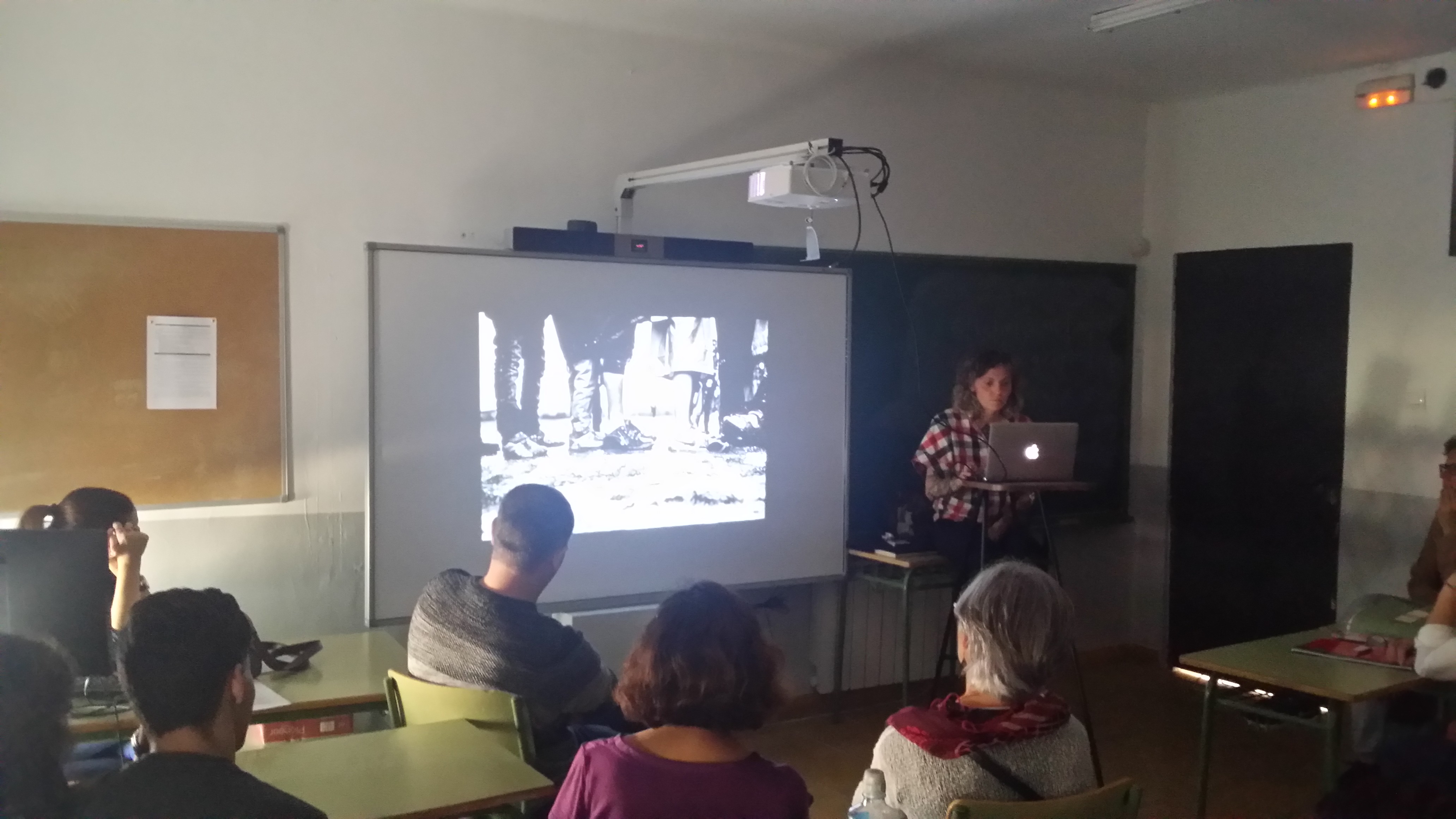
Participants:
-Students of LA UVA building, morning session.
-Students of San Agustín building, morning session (4th year and Prometeo, Level I and II).
-Speaker: Photographer Mai Saki.
-Teachers: Organizar: Maribel Casado.
Teachers accompanying students: Manolo Sosa, Maribel Apostua, Javier Manzano, Miguel Rodríguez, Roberto González…
Objectives:
-To make students aware of the serious situation suffered by the Syrian refugees at present through photographer Mai Saki’s personal experience.
-To promote debate and critical thinking on respect for human rights.
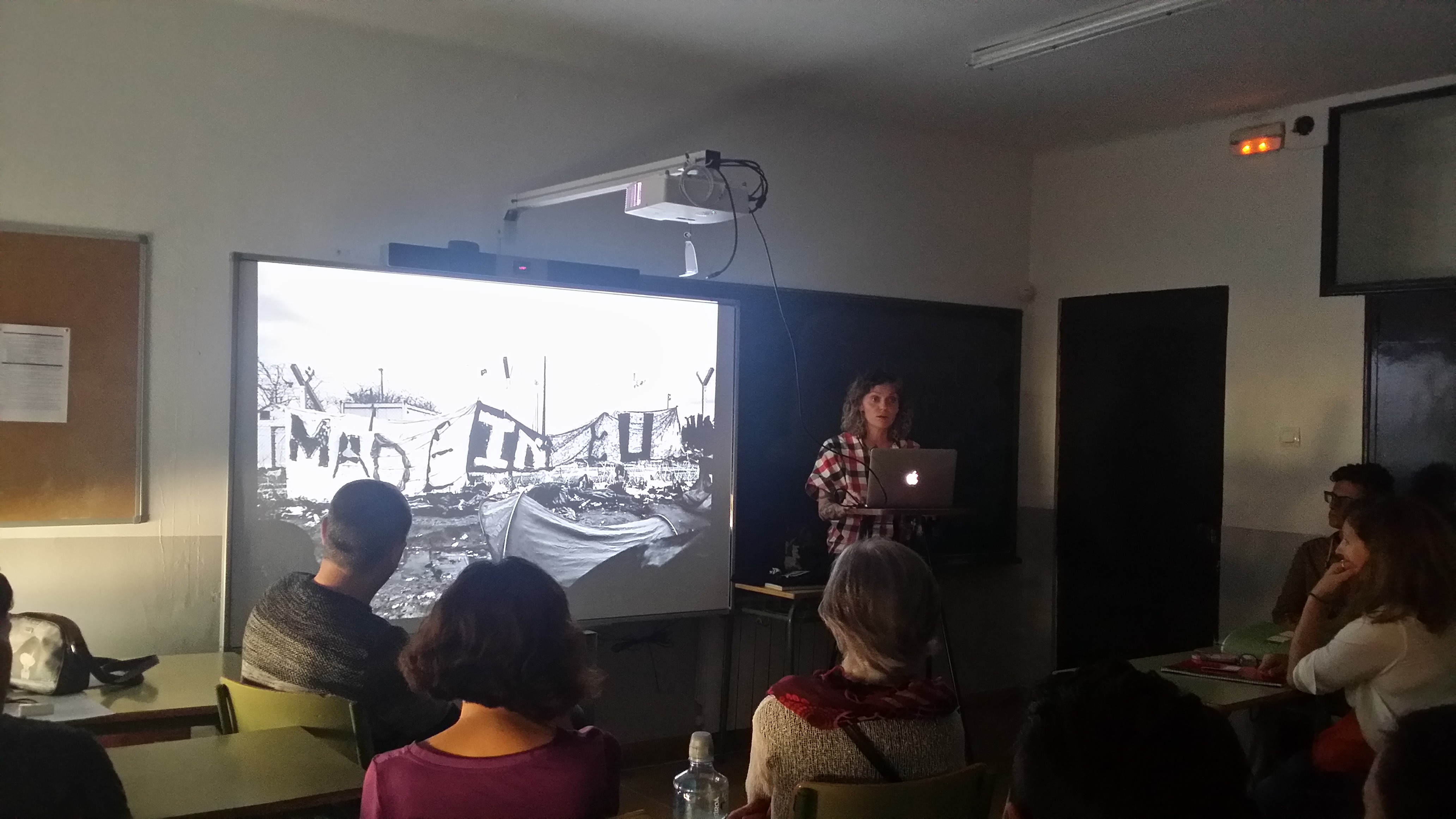 Photographer Mai Saki was invited to present first hand, by using her photographic work, the experience that she herself has lived during her visits to two refugee camps in Greece and France. As a result of that first trip to Greece is the exhibition entitled “The Way of Shame”. As she expresses in the exhibition catalogue, the photographs of the “The Way of Shame” show people in transit, homeless people, torn from their daily lives by war, who seek a life in peace, far away from the rumble of bombs. There are faces of people in the rain, children playing in muddy places, people walking along a path where others have decided to put door. Some faces keep hope, others show despair, resignation. Every photo tells the story of a person, but all of the stories look alike. With every image, Mai Saki made students think and feel the same as her when the photo was taken. Obviously our students expressed their opinions. Some of them had the same opinions as the speaker, however others were not in favour of helping the refugees, mainly because of fear and ignorance of their culture. It was a good opportunity to refute those ideas through arguments that explained the need to protect human rights and to respect differences.
Photographer Mai Saki was invited to present first hand, by using her photographic work, the experience that she herself has lived during her visits to two refugee camps in Greece and France. As a result of that first trip to Greece is the exhibition entitled “The Way of Shame”. As she expresses in the exhibition catalogue, the photographs of the “The Way of Shame” show people in transit, homeless people, torn from their daily lives by war, who seek a life in peace, far away from the rumble of bombs. There are faces of people in the rain, children playing in muddy places, people walking along a path where others have decided to put door. Some faces keep hope, others show despair, resignation. Every photo tells the story of a person, but all of the stories look alike. With every image, Mai Saki made students think and feel the same as her when the photo was taken. Obviously our students expressed their opinions. Some of them had the same opinions as the speaker, however others were not in favour of helping the refugees, mainly because of fear and ignorance of their culture. It was a good opportunity to refute those ideas through arguments that explained the need to protect human rights and to respect differences.
Definitely, after analyzing the results of the evaluation activities carried out after the talk, we can say that the experience was positive, and not only for the students but also for the teachers who participated.
Attached documents:
Exhibition catalogue: “The Way of Shame”.

Evaluation:Attached documents:
Assessment of Mai Saki’s talk (pdf)

Dissemination: La gaceta.
A 3.4.2 The develoment cooperation policies in Extremadura and basic concepts about human mobility.
Participants:
Mr. Ángel Calle, Director of AEXCID (Extremadura International Cooperation Agency), Students of Level II of ESPA (Secondary Education for Adult people), module I (3ºESO) and modulo II (4º ESO).
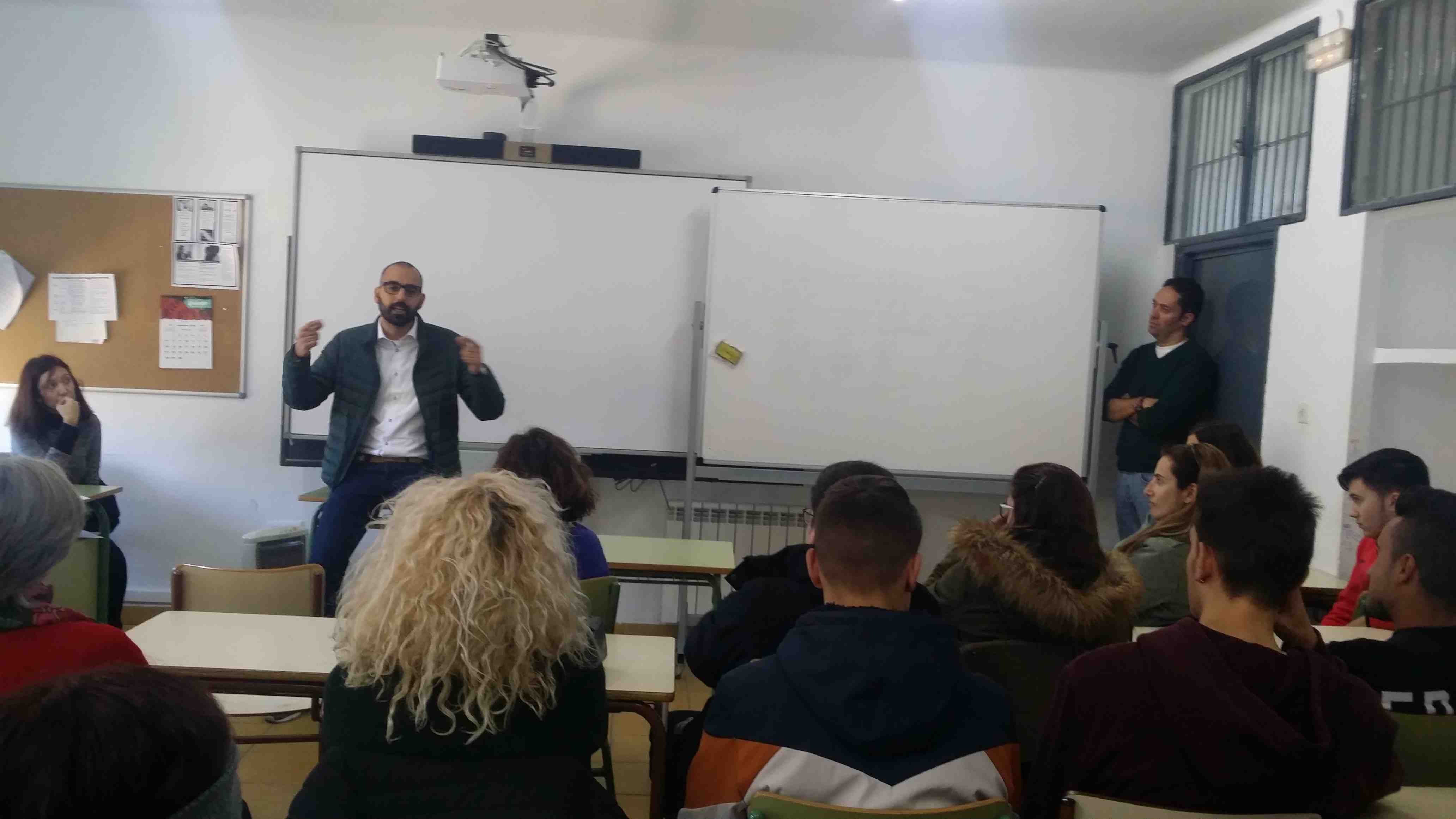
The activity was carried out with the students from “La UVA” building in the morning session. The AEXCID director explained the operation of the Extremadura development cooperation agency, highlighting some of its projects. In a participatory way the concept of refugee was built, through an analysis of the causes which can make people flee their country, bearing in mind what this means; war reasons, political or religious persecution, persecution for sexual orientation, climatic reasons… about each of these reasons, stories and concrete experiences in different countries of the world were told.
During the debate some people were against the shelter of these people, both refugees and immigrants coming for different reasons. It was emphasized that the confrontation is not between the poorest people, but in the demand of social policies and in the redistribution of resources.
A 3.4.3 Talk - exhibition about Andrés Plaza`s experience in a refugee camp.
Speaker: Andrés Plaza, from Extremadura Platform for Refugees
Audience: students of level I and II of ESPA (1st, 2nd and 4th), Key Competences students and PAU students.“La UVA” building.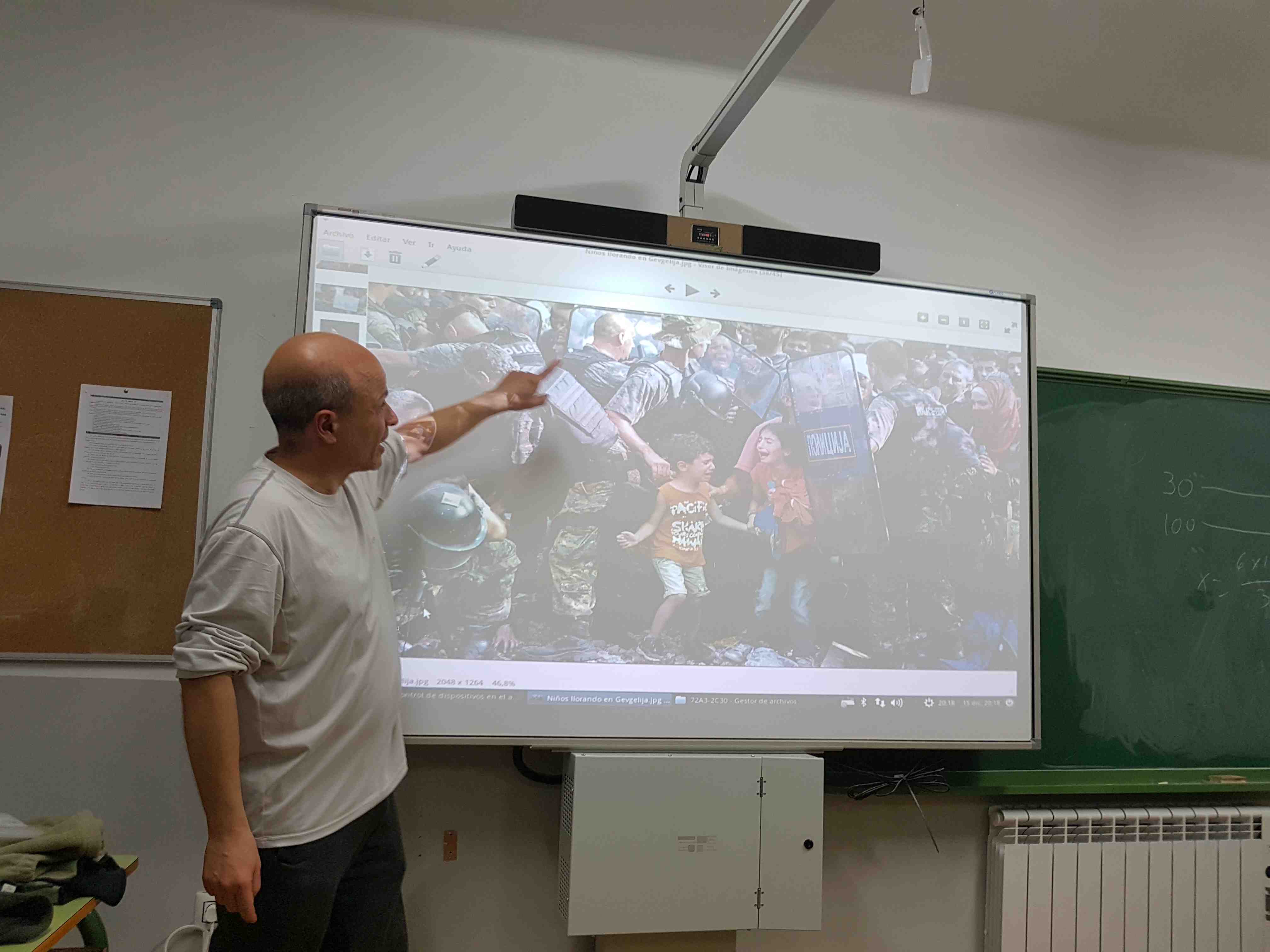
The activity consisted of a talk of the speaker Andrés Plaza, accompanied by slides of images about his experience in a refugee camp at the Turkish-Greek border.
Next a debate between the students and the speaker began, with questions and thoughts of interest for all the assistants.
To end up, the speaker handed out leaflets of a NGO which is working for refugees, HIMAYA, and currently carries out an initiative to house the most vulnerable refugees in rented apartments
A 3.4.4 Visit to the center of attention to the immigrant of the city council of Badajoz
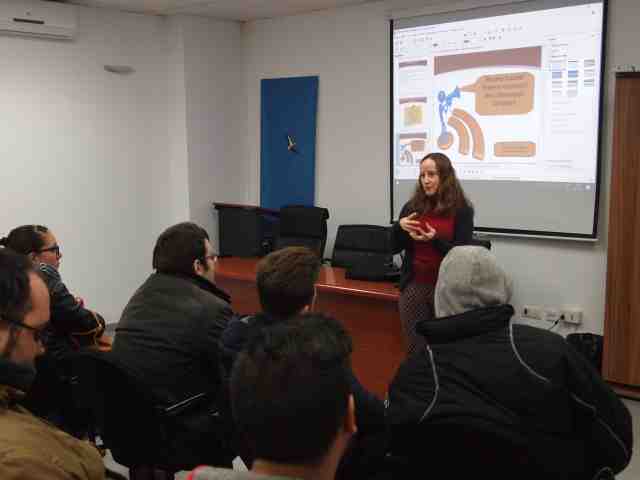
24th January 2017
Participants
-Speaker: Nuria Ferrera. Social worker, coordinator of the Immigrant Service of the Local Institute of Social Services. City Hall of Badajoz. http://www.aytobadajoz.es/es/imss/el-imss/inmigrantes
-Students: two groups, Levels I and II of “Prometeo”.
-Teachers: Concha Flores and Maribel Casado from the Guidance Department. http://cepaabril.juntaextremadura.net/
Objectives
-To make known to the students the service of attention to immigrants of the city council.
-To deepen the resources that are offered from this service: sensitization, advice and legal support, etc.
-To make students aware of the rights of immigrants.
-To offer our support to the professionals working there for the elaboration of materials that we all agree.
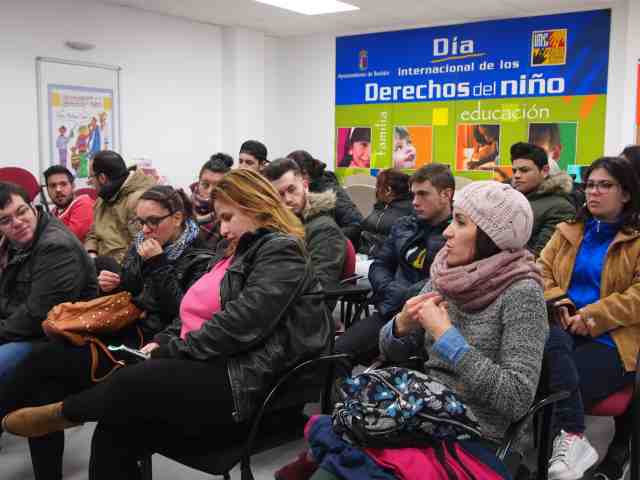
We walked to the headquarters of the Institute of Social Services and there we were received by Nuria Ferrera, coordinator of the service of attention to immigrants with 20 years of experience in the centre. She explained how the service works accompanying the exhibition of slides which showed:
-Statistical data of the immigrant population of Badajoz.
-Features of the service:
. Sensitization: organization of conferences and courses, talks, brochures, and so on.
.Social care: individualized attention, social reports, home visits…
.Advice and legal support: information and guidance on administrative procedures, reports of social roots, etc.
Later a question time was started and they were answered by the speaker and we all enriched ourselves with the reflections and the debate that followed.
On the question of how our projects can support the municipal service, she encouraged us to elaborate more attractive and visual material starting from their guide, oriented to youth (children of immigrants), who have more access to technologies.
Before leaving, we were given an information guide for immigrants for each students and teacher.
Evaluation:
The evaluation is done in the classroom by each teacher and his/her group through open questions in which all the students give their opinion about the importance and value of the activity carried out.
A 3.4.5 Blog CEPA ABRIL
Click the image to enter
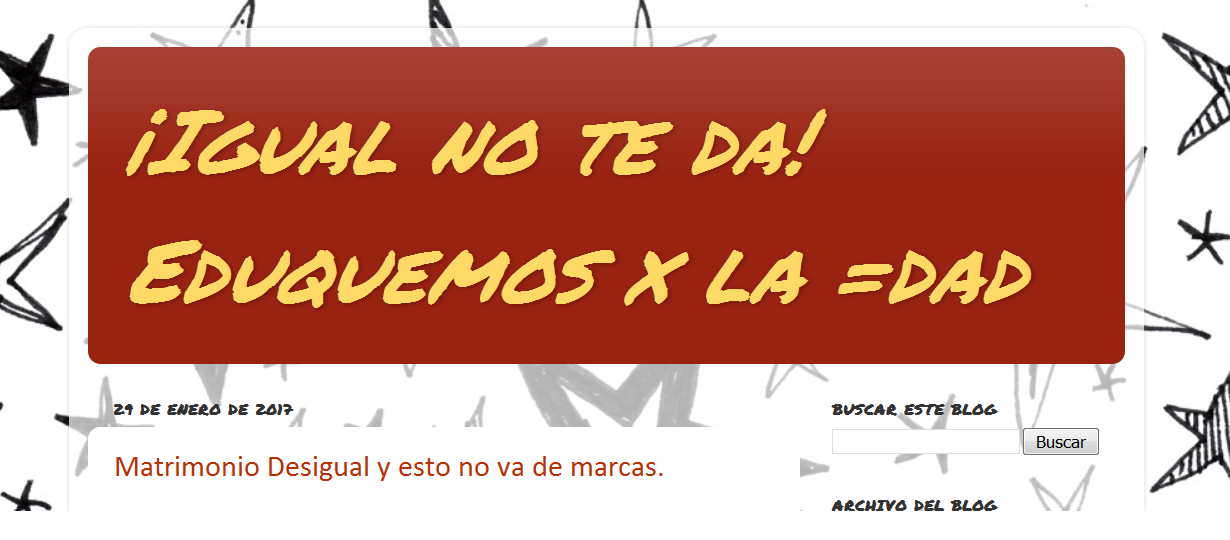
Saja, displaced in Syria, wonders who does not want to study
A 3.4.7 Adel Mohamed Najjar’s talk, Imam of the Mosque of Badajoz.
Participants: students of Level I Module II from San Agustín and La UVA. Prometeo Level II students.
Objectives:
-To bring Muslim culture closer to our students.
-To foster understanding and dialogue and to break false stereotypes.
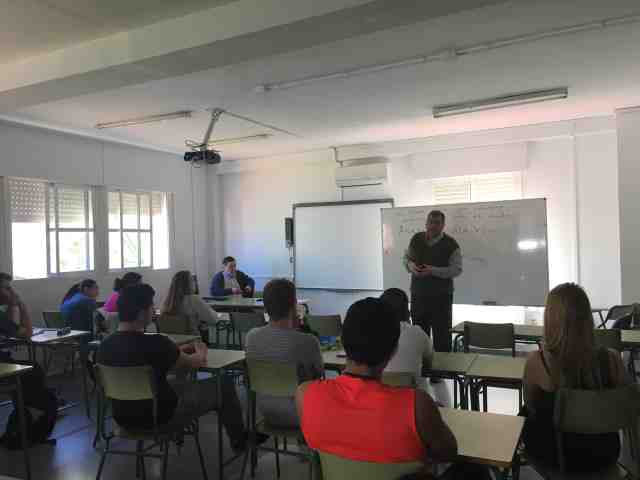
The activity consisted on a talk-debate on Muslim culture where Adel Mohammed Najjar introduced the basic pillars of his religion and culture and he was interested in encouraging dialogue in order to fostering coexistence and peace. After his exposition, he answered lots of questions asked by very curious students and teachers. Finally he was given a gift as a sign of gratitude.
Evaluation:
-Further discussion on the most interesting points of the talk.
-Writing work on the contents exposed by the imam.
A.3.4.7. We visit the Mosque in Badajoz
In our second year of the project we paid a visit to Adel Najjar , who had kindly invited us in his visit to our school. We were welcome there with his usual kindness. He told us about his culture and his traditions. After a long talk and discussion, he shared with us some drinks, cakes and biscuits together with some moments of relaxed chat. There's no doubt that this visit broke some stereotypes and preconceived ideas. 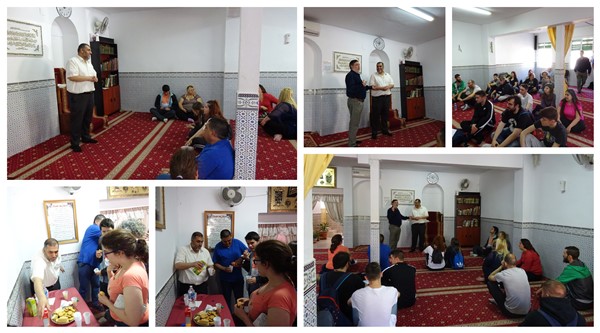
A.3.4.8. Lamin Pictures Exhibition
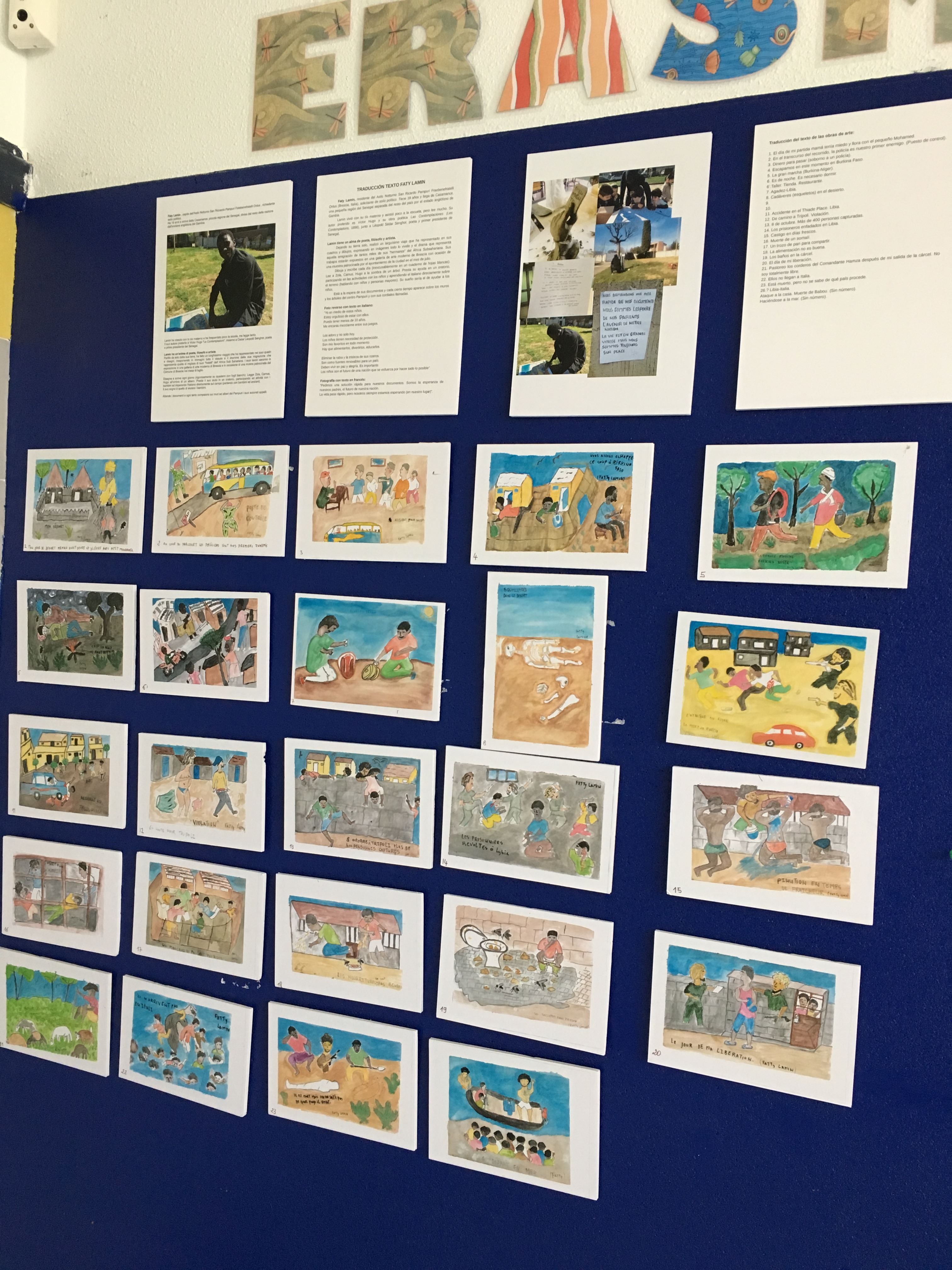
On our trip to Italy we could see an exhibition that really impressed us all. It is the personal story of one of the former students of our Italian partners, Lamin, who at the age of 19 years old arrived in Casamance, a small region of Senegal separated from the rest of the country by the Anglophone country of Gambia. Leaving his land on his own, he made a long journey that he has represented in his pictures and drawings, expressing in images what he lived and the drama of the emigration of thousands of his brothers from Sub-Saharan Africa. We thought that this story should also be known outside of Italy and we asked our Italian colleagues to send us the drawings, which we now have on our "Erasmus Panel" so that all the students in our center can get an idea of what these people are living.